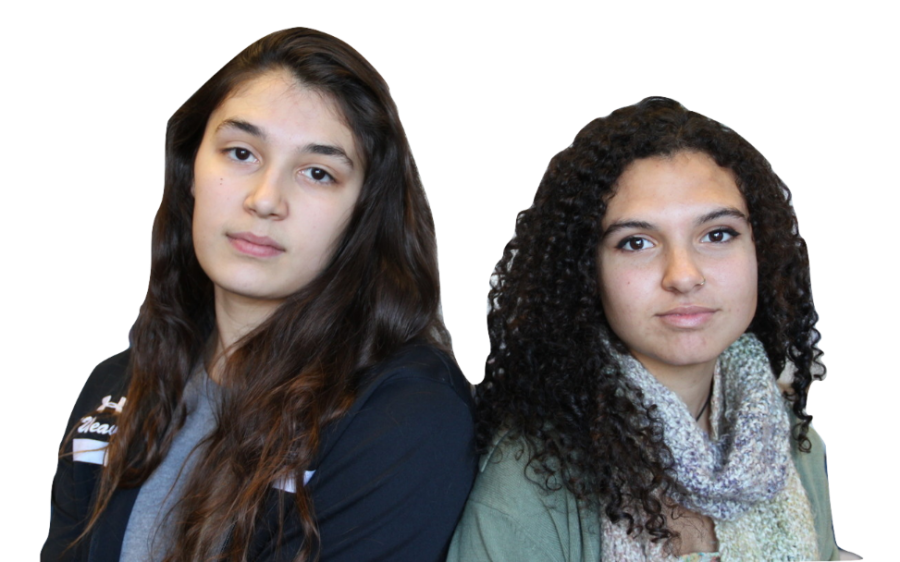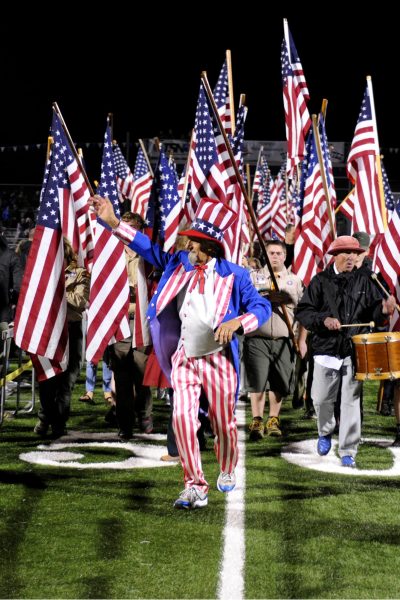Communication Above All Else
Certain moments can define a place’s history. It doesn’t have to be big history, it doesn’t have to be the history of America or the history of the world; it can be the history of a small community, but an influential one. We all walk the halls of Analy as future adults, the future fabric of our own personal stories and the stories of those around us. One day, we will all look back at our high school years, and although our specific memories will all be different, we will all share a certain undertone, a feeling that we got when we attended Analy. Recent events have come to light, events that make Analy look as though our community history is teetering on the line between a happy memory and a shadowed one. The truth is that not everyone speaks up when their experience at Analy is damaged. Not everyone has the ability or the opportunity to speak out against the very real issue that is racism.
Last Friday, a boy named Evan Mack shared his story with a journalist from The Press Democrat. His experiences with racism, with brutal words, actions, and a collection of cruel people at Analy shed light on an issue, the importance of which is perpetually diminished both at our school and in our society. Evan Mack’s experience with racist and ignorant people at Analy was not an isolated incident, and it wasn’t an aberration. It was an indication of an inherent problem that stems from a lack of consistent dialogue about an age-old issue. It’s a dialogue that needs to be started, unless we want to watch others of us go through the same cruelty that Evan had to go through.
We decided this Friday to ask a variety of teachers and students about their feelings regarding racism at Analy and in society as a whole. The answers we got, as well as some answers we didn’t get, illustrate where we currently stand. Many teachers were willing to share their opinions and experiences, yet several students declined to comment, citing fear of negative backlash against their words. The fact that some Analy students are unwilling to talk to their own school newspaper about an issue like this speaks to the depth of the roots of this problem. All students should feel safe in their high school, and it’s obvious that not all do.
We asked long-time P.E. teacher and badminton coach Ms. Williams about her experiences with students using racial epithets or slurs in her classes or within her earshot. She replied with pain in her voice as she recalled instances when students used blatantly offensive language, and remembered how the students wouldn’t understand why she would discipline them for it. “When you call a kid on it and try to correct them, they always downplay it,” said Williams. “They say ‘Oh, oh—he’s my friend’ or ‘We’ve been friends for a long time.’ And as much as you try to explain the gravity of that, or how it will be perceived, or what will happen if someone they don’t know overhears it, it doesn’t matter to them.” She says that it’s this lack of education about racism and lack of thought about the others that surround oneself that leads to cruel words said and people hurt.
Upon hearing the same question, math teacher Ms. Amirkhan reflected on the context of racism among other discrimination that happens regularly at Analy and in our society as a whole. As a teacher of all grades, Ms. Amirkhan sees a vast array of students come through her doors, and often sees members of minorities at Analy feel the pressure of a majority that too often demonstrates the insensitivity that power brings. “I guess the thing that keeps coming to my head is that we are a microcosm of society,” said Amirkhan. “There’s a lot of hate out there, and a lot of bullying. I think it extends past racism, all the way to every minority who gets picked on. I teach kids, and kids come from all different backgrounds. This [Evan Mack’s story] is another hideous example of bullying, and we need to address it as a society.” Teachers like Ms. Amirkhan see the direct effects of racism and other types of prejudice on the faces of the students in their classrooms. These faces are the ones that we need to pay attention to, because we are only as good and as strong as our worst, our cruellest, and our weakest links.
One Analy faculty member reiterated Ms. Amirkhan’s point, describing daily interactions with students who have been victims of racism. “I see the direct results of these hateful words and I am disgusted at how little attention the issue of racism is given at Analy.” This comes from a person who sees it as a professional duty to help students navigate the already tricky waters of high school. When hateful words and ignorant actions are added onto that burden, it can become too much for young shoulders to bear.
Mr. Goldberg, Analy’s physics teacher, has had the opportunity to work primarily with older students, juniors and seniors. When asked about his observations of racism at Analy, he said “I teach older students, more enlightened students, hopefully more accepting students than other teachers do. Now, walking through the quad, every so often I’ll hear ‘That’s so gay’ or ‘That’s so Jewish,’ and I’ll turn around and say ‘What do you mean by that?’ They’ll say ‘I was just kidding. It was just a joke.’ I do believe that there’s some undercurrent of racism, sexism, genderism, that happens here.” These staff members describe a pattern of people using racist language and thinking it’s not a big issue, thinking that humor somehow excuses cruelty.
History teacher and coach Mr. Carpenter shared what he’s heard and witnessed regarding racism at Analy. He expressed that it is in issue that has been a problem for years and continues due to lack of conversation and excessive defensive behavior. As far as any racial slurs and comments made by students in class or in passing, Carpenter states that he’s heard people question other student’s ethnicities, saying “Why are you acting black—your mom is white,” or “You’re not black enough,” as well several anti-Mexican, anti-immigration and anti-Muslim comments. Most of all, Carpenter emphasized the importance of people’s reactions to these things—or lack thereof—and the lack of willingness to admit there is a problem. “We need to resist the urge to be defensive. It’s time to talk about it,” Carpenter stated. “This is an educational institution. We aren’t just teaching math or history or English—we are teaching students how to live in the world, and ignoring this issue would fall short. How do you get to the root of this slippery, painful, systemic issue that is so deeply ingrained in our society? It takes leaders, administrators, and teachers to admit that it needs to be dealt with.” Carpenter went on to stress this point, saying “Admitting we have a problem does not condemn the whole community. You’re not turning on your family. It doesn’t make you a traitor or a bleeding-heart liberal to admit that.”
Although many students of color to whom we reached out declined to comment, some were willing to share their experiences and feelings on the issue. Senior student Aletta Enge touched on the different personalities people often present depending on who they’re with. “I think for me at least I can just tell how people’s demeanors change around me depending on whether or not they know or realize that I’m a person of color,” said Enge. “The tone of people’s jokes and comments definitely gets altered.” As two girls of mixed race, we can both attest to the number of conversations we’ve entered where the tone shifts rapidly, and sidelong glances are exchanged as someone wonders if we heard the N-word, or if we heard the last racist joke.
Senior Whitney Ferrell brought up another point, one that is just as powerful, and perhaps more disturbing for our school and for our society. “I think it’s sad to say I can’t recount any one instance where I’ve experienced a racial stereotype or epithet. It’s something that just goes over my head at this point. I’ve become desensitized to the fact. It’s just so common among teenagers, especially in high school, that I no longer take offense. I just brush it off.” What does it say about our surroundings that a student could be saturated with so much racism, so many instances of insensitivity, that she comes to expect it as the new normal?
Students of color shouldn’t have to become so strong as to be unaffected by racism. Senior basketball captain Travis Holmes had an undertone of rage in his voice when he recounted the degrading moment he’d witnessed earlier in the day on Friday. “There was a kid today that burst into tears because someone found out that he was half Jewish and someone threw a penny on the ground and told him to pick it up.” This is not the sort of environment we want to be in, not the sort of memories we want to shape our high school history. Although we are lucky enough to have some people here at Analy who serve as support systems, as English department chair Ms. Williamson did for Evan Mack, we need to do more to help minorities. No student should have to spend their teenage years building a thicker skin, when the solution is clear—difficult and time-consuming, but clear. Words must be spoken, experiences shared, and barriers broken. It is a battle that’s been raging for hundreds of years, since our nation’s birth, but that doesn’t make it antiquated. That makes it more important to fight for what is right. Our generation can’t be the one to ignore this issue, not when so much progress has been made, and there is so much left ahead of us, work unfinished.
At an old, historic school like Analy in Boston, Boston Latin School, two black students have started a hashtag and a conversation. The hashtag #blackatbls has become a campaign to shed light on the blatant racial discrimination that goes on at the school, racism that the students argue is perpetually inadequately addressed by the administration. The movement has become one of national attention, garnering a spread in the New York Times, and has expanded to include all races and cultures at Boston Latin who have felt the sting of racism. The school is being pressured to pay closer attention to the issues of minority students at a predominantly white school. It is that sort of grassroots movement, initiated by the students and taken up by the administration, that affects change. It’s that sort of movement that Analy should draw inspiration from.
This conversation may spark the prolonged realization the we are not exempt from addressing these issues, not only in our high school but in our community. It is common and natural for things to get uncomfortable when discussing issues like racism, but that shouldn’t serve as an excuse to let it blow over once more. It is impossible to be too careful now that we have seen the repercussions. As mixed-race students, we have always known this ourselves, and after interviewing teachers and students it is clear that this insensitivity has proved more painful on the receiving end than ever. The fact of the matter is that for students of color, there are times when it is easier to stay silent and let the harsh words get swept under the rug, to avoid any emotional confrontation with a mass of people who may still think that racism is something of the past and who deny any possibility that it could exist in our safe and happy town.
This unfortunate event should be seen as an opportunity for discussion and support for students of color, rather than an offensive or inaccurate depiction of our school community. Although the Press Democrat article may seem to contradict our administration’s efforts to keep students as safe as possible, frankly, there are certain people who need more protection than others. The minorities that are underrepresented need to be heard now if they were not before. Instead of suggesting that those in the past were wrong, it is important to ensure that a discussion is had and no one has to endure such hardship, let alone be ignored if they do.
“It’s hard to share your experience when it is so serious for you and has proved so easily ignorable for the majority. My mom has had to pick me up from school when I couldn’t sit in class and see the faces of people who made me feel so invalid, so helpless because of something as innate as my skin color. It is numbing. Mack’s story reminds me of a reality that pains me to think I had accepted so easily—that when I experienced any subtle, or not so subtle, form of racism or oppression in my own community, there was no positive end result. There was no enlightening outcome I saw that could’ve made the torment worthwhile. Now, with his story bringing such attention to this issue, I’m starting to believe that awareness will be spread, and that it will be worthwhile. I’m hugely grateful for counselors like Ms. Ruder and teachers like Ms. Ambrose and Mr. Carpenter, with whom I feel supported and brave enough to share my truth as a mixed-race student. People forget that this is not just a matter of opinion. It’s about being safe at your school, an educational environment and a place everyone is forced to be. It is apparent now that not everyone has felt safe. Does Analy look bad right now? Maybe. I know for certain that we’ll look even worse if people fight for our image rather than the kids inside.” – Fifi Perkins
“I went through the first fourteen years of my life believing that my race wasn’t a noteworthy issue. Then, after a while, I started to resent the constant questioning of ‘what I was,’ as my society and my peers asked me to choose a side, to put myself in a box. I wanted to live without race for so long, because I didn’t know exactly where I fit. Now, after meeting some beautiful, thoughtful, and accepting people, and after becoming more close with my African-American and African history as well as my European background, I hold my head high and proud, willing to answer with conviction that I do not have to choose a side, I can be black and I can be white. But sadly, the rest of the world does not share this opinion. Much of the rest of the world divides race into boxes, asking people to fit into socially constructed stereotypes that confine and suffocate the human mind. I want to help break down these boxes. I want to not eliminate race, but rather help our society, starting with our small part of it here at Analy, to embrace all colors and creeds for who they are as individuals, not as members of a group. We are all one, all human, and here we are all young adults looking out into our future. It’s not a future any of us should face alone.” -Saja Spearman-Weaver





Daniel De Kay • Feb 28, 2017 at 10:17 am
I want to applaud the writers for this important article. Bullying, for any reason, is simply unacceptable in our schools. Coaches, teachers, administrators, fellow students, anyone involved with education must not tolerate any form of bullying. It doesn’t matter if the bully is a star player on the school team, an outsider, or anyone in between; bullying is unacceptable. School MUST be a safe place for everyone, and it is everyone’s responsibility to make it so. Silence is tacit agreement. Anyone not speaking out when bullying takes place is complicit in the act. Coaches, teachers, administrators… you need to demonstrate strong leadership. Speak out, step in, stop bullying.
Karen Clem • Feb 17, 2016 at 8:01 am
I am so proud of you for writing this article and refusing to let this topic be swept under the rug. Thank you, thank you, thank you!
Sarah • Feb 11, 2016 at 12:22 pm
Most intelligent, thoughtful comments on the subject thus far. I applaud these young writers for tackling the conversation on campus – that’s more than the administration saw fit to do. Seriously disappointed in their lack of action and denial of the issue when the Mack story broke. They were so unprepared that at least one class was allowed to belitte/badmouth Evan and his family in an open forum with the teacher’s approval. If the administration doesn’t take action, Analy will fall – and not gracefully.
Sarah • Feb 11, 2016 at 12:17 pm
Most intelligent, thoughful comments on the subject thus far. I applaud these young writers for tackling the conversation on campus – that’s more than the administration saw fit to do. Seriously disappointed in their lack of action and denial of the issue when the Mack story broke. They were so unprepared that at least one class was allowed to belitte/badmouth Evan and his family in an open forum with the teacher’s approval. If the administration doesn’t take action, Analy will fall – and not gracefully.
Lexa Mack • Feb 11, 2016 at 9:32 am
I am Evan Mack’s grandmother and I want to express my admiration for the authors of this beautifully written article. It is not just a “story,” but a fearless and thoughtful expression something that needs to be addressed at the level of Analy and all other learning institutions.